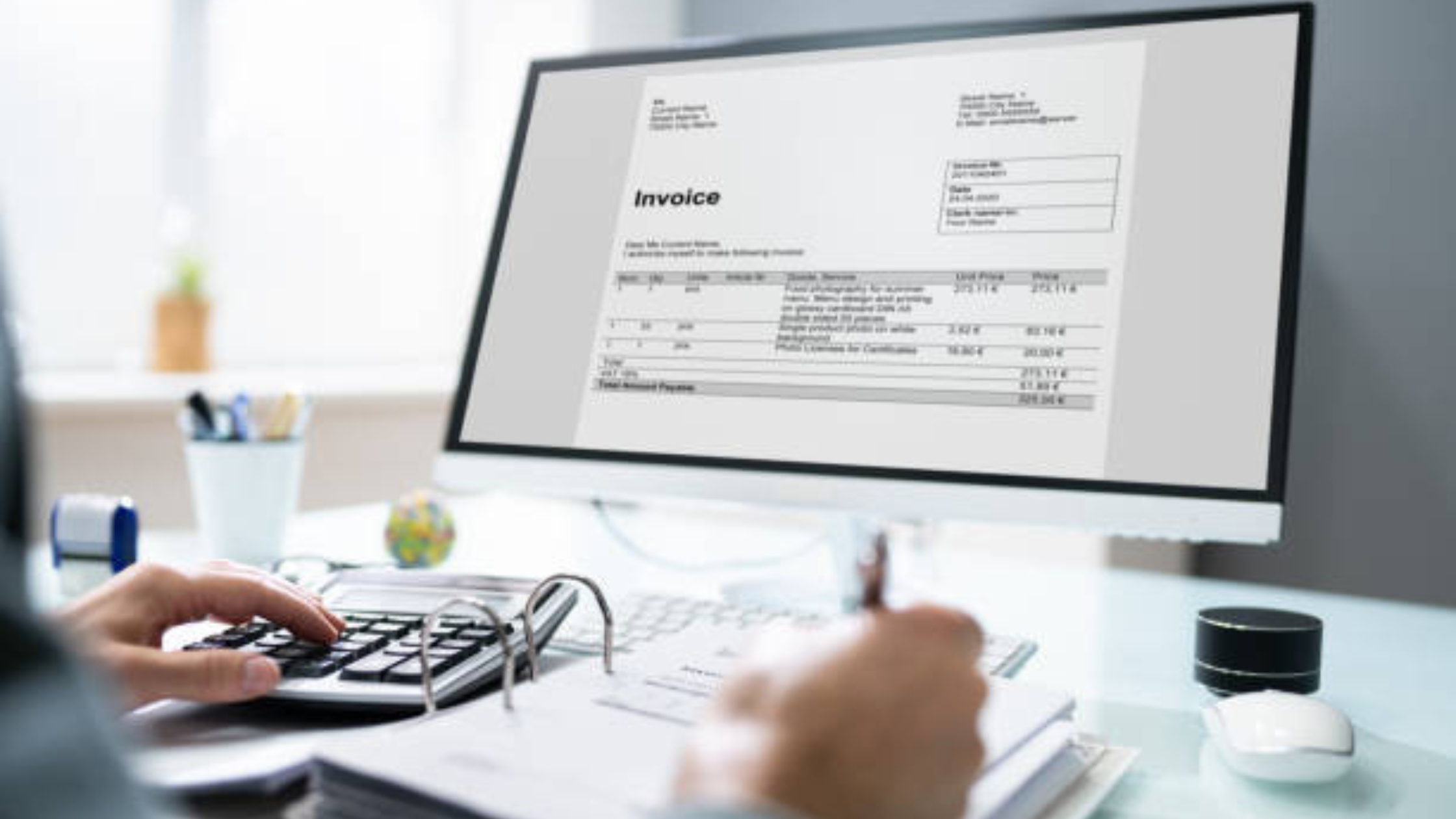The Ultimate Guide to Creating LTA Bills

The ability to generate precise and timely financial statements is a key aspect of organizational efficiency. Whether you are a seasoned professional aiming to optimize your billing procedures or a novice eager to enhance your skills, this all-encompassing guide is tailored to meet your needs. Discover a wealth of insights, strategies, and practical examples that will equip you with the tools to excel in the realm of creating detailed bills. From foundational concepts to advanced techniques, this resource promises to elevate your billing competence and streamline your financial operations. Join us on a journey of discovery as we delve into the intricacies of crafting accurate and effective financial documents. Prepare to enhance your productivity, precision, and financial acumen with the knowledge shared within these pages.
Comprehending LTA Regulations
In the realm of transportation, understanding the Land Transport Authority (LTA) regulations is paramount for compliance and safety. This blog section delves into the essential components of LTA regulations and explores the compliance standards and legal framework that govern the transportation industry.
Essential Components of LTA Regulations
To operate within the transportation sector, it is crucial to grasp the essential components of LTA regulations. These components encompass a wide array of rules and guidelines that dictate the proper functioning of transport services. From licensing requirements to safety standards, each component plays a pivotal role in ensuring the efficiency and safety of transportation operations.
Compliance Standards and Legal Framework
In addition to understanding the components of LTA regulations, compliance standards and the legal framework are equally vital. Compliance standards outline the specific criteria that transport operators must meet to adhere to LTA regulations. Moreover, the legal framework provides the overarching structure within which these regulations operate, offering clarity on rights, responsibilities, and enforcement mechanisms.
Importance of Compliance
Compliance with LTA regulations goes beyond avoiding penalties; it is about ensuring the safety of passengers, pedestrians, and other road users. By adhering to safety protocols and operational standards, transport companies contribute to creating a secure and efficient transportation network that benefits society as a whole.
Evolution of LTA Regulations
As technology advances and transportation methods evolve, LTA regulations must adapt to address new challenges and opportunities. The evolution of regulations often reflects changing societal needs, environmental concerns, and technological innovations shaping the transportation landscape.
Collaboration and Stakeholder Engagement
Effective implementation of LTA regulations requires collaboration among various stakeholders, including government agencies, transport companies, and the public. By engaging in constructive dialogue and partnerships, stakeholders can work together to enhance compliance, address regulatory gaps, and promote sustainable transportation practices.
Continuous Learning and Adaptation
Given the dynamic nature of the transportation industry, continuous learning and adaptation are essential for staying abreast of regulatory changes and industry trends. Transport professionals must remain proactive in updating their knowledge and skills to meet evolving compliance standards and contribute to a safer, more efficient transportation ecosystem.
By comprehending the intricate details of LTA regulations, transportation stakeholders can navigate the industry landscape with confidence and ensure seamless operations while upholding safety and compliance standards.
Preparing for LTA Billing
Gathering Employee Travel Information
Employee travel information is a crucial component in the process of preparing for Leave Travel Allowance (LTA) billing. It is essential to collect detailed data on employee travel, including travel dates, destinations, mode of transport, and any accompanying family members. This information will serve as the foundation for accurate LTA calculations and reimbursements.
Streamlining LTA Calculation Methods
Streamlining the LTA calculation methods can significantly improve efficiency and accuracy in billing processes. Utilizing digital tools and software solutions can automate the calculation process, reducing manual errors and saving time. Implementing standardized procedures for LTA calculations across the organization can also ensure consistency and compliance with company policies and government regulations.
Importance of Timely Submission
Timely submission of employee travel details is critical for smooth LTA billing processes. Delays in submitting travel information can lead to delayed reimbursements, impacting employee satisfaction and financial planning. Setting clear deadlines and reminders for employees to submit their travel data can help in timely processing of LTA claims.
Employee Communication and Training
Effective communication with employees regarding LTA policies, procedures, and deadlines is essential to ensure compliance and understanding. Providing training sessions or resources on how to accurately document travel expenses and requirements for LTA can help employees navigate the process smoothly. Clear communication channels for addressing queries related to LTA billing can also enhance employee experience and reduce errors.
Auditing and Compliance Measures
Regular auditing of LTA billing records and compliance checks are necessary to identify any discrepancies or non-compliance issues. Implementing internal audit procedures and checks can help in maintaining accurate records and adhering to regulatory requirements. Addressing any discrepancies promptly and taking corrective actions can prevent financial losses and legal complications.
Leveraging Technology Solutions
Utilizing advanced technology solutions such as expense management software, travel booking platforms, and data analytics tools can streamline LTA billing processes. These tools can automate data collection, verification, and reporting, improving efficiency and accuracy. Integrating technology solutions with existing HR and finance systems can create a seamless workflow for LTA billing and reimbursements.
Ensuring Data Security
Protecting employee travel information and LTA billing data is paramount in maintaining confidentiality and compliance. Implementing robust data security measures, such as encryption protocols, access controls, and regular security audits, can safeguard sensitive information from unauthorized access or breaches. Educating employees on data privacy and security best practices can also enhance awareness and reduce the risk of data vulnerabilities.
Continuous Process Improvement
Continuously evaluating and refining LTA billing processes can drive operational excellence and cost savings. Encouraging feedback from employees on their LTA billing experience can provide insights for process enhancements. Implementing feedback mechanisms and performance metrics can help in measuring the efficiency and effectiveness of LTA billing operations, enabling organizations to make data-driven decisions for continuous improvement.
Collaborating Across Departments
Collaboration between HR, finance, and travel management departments is essential for seamless LTA billing operations. Establishing cross-functional teams or committees to oversee LTA processes, resolve issues, and drive strategic initiatives can promote synergy and alignment across departments. Regular meetings and communication channels between departments can facilitate knowledge sharing and coordination, ensuring a holistic approach to LTA billing management.
Regulatory Compliance and Updates
Staying informed about regulatory changes and updates related to LTA policies and tax implications is crucial for compliance. Monitoring legislative developments, tax laws, and industry guidelines can help organizations adapt their LTA billing practices accordingly. Engaging legal counsel or tax experts for interpreting complex regulations and ensuring adherence to compliance standards can mitigate risks and liabilities associated with LTA billing.
Employee Feedback and Engagement
Engaging employees in the LTA billing process and seeking feedback on their experiences can foster a culture of transparency and trust. Conducting surveys, focus groups, or feedback sessions to gather employee insights on LTA policies, processes, and communication can provide valuable input for enhancing employee satisfaction and operational efficiency. Incorporating employee suggestions and addressing concerns proactively can demonstrate a commitment to employee-centric practices and continuous improvement in LTA billing operations.
Step-by-Step Guide to Generating LTA Bills
Managing Leave Travel Allowance (LTA) bills efficiently is crucial for organizations to ensure accurate reimbursements and compliance with company policies. Let's delve deeper into the step-by-step process of generating LTA bills:.
Data Input and Verification Procedures
Before diving into the generation of LTA bills, it is imperative to establish robust data input and verification procedures. Begin by collecting detailed employee information, travel itineraries, and LTA entitlements. Utilize secure platforms or software solutions to streamline data entry and verification processes, reducing the likelihood of errors and ensuring data integrity.
Accurate Determination of LTA Entitlements
Once the data is meticulously verified, the next critical step is the accurate determination of LTA entitlements for each employee. Consider factors such as the company's LTA policy, travel distance, and frequency of claims to calculate the eligible amount precisely. Leverage data analytics tools to automate entitlement calculations and generate insights for better decision-making.
Thorough Review and Approval Protocols
Maintaining a stringent review and approval mechanism is paramount in the LTA billing process. Establish a comprehensive protocol involving multiple levels of review by managers and finance personnel. This multi-tiered approach not only enhances accuracy but also ensures compliance with company policies and regulatory requirements.
Documentation and Record-Keeping Best Practices
Central to the LTA billing process is meticulous documentation and record-keeping. Create a structured repository to store all relevant documents, including travel receipts, policy guidelines, and approval records. Regularly audit these records to identify discrepancies and proactively address any issues that may arise.
Employee Communication and Support Strategies
Effective communication with employees is key to fostering transparency and compliance in the LTA billing process. Organize interactive workshops or training sessions to educate employees on LTA policies, claim procedures, and the importance of accurate documentation. Establish a dedicated support channel to address employee queries promptly and provide assistance when needed.
By adhering to these comprehensive guidelines, organizations can streamline the generation of LTA bills, mitigate risks of errors, and reinforce a culture of compliance and accountability within the billing process. Embracing technological advancements and best practices ensures smooth operations and enhances overall efficiency in managing LTA reimbursements.
Ensuring Accuracy and Compliance
Validation of Calculations and Records
Accuracy is paramount. Ensuring the correctness of calculations and maintaining accurate records are crucial for making informed decisions. This section will delve into the importance of validating calculations and records to avoid errors and discrepancies.
Adhering to Internal Policies and External Regulations
Compliance with internal policies and external regulations is essential for the success and sustainability of any organization. This part of the blog will discuss the significance of adhering to these guidelines to maintain ethical standards, build trust with stakeholders, and mitigate risks.
Importance of Data Accuracy
Data accuracy is the cornerstone of decision-making in any organization. Inaccurate data can lead to flawed insights and poor judgments. By ensuring that calculations are correct and records are precise, businesses can enhance their operational efficiency and strategic planning. Moreover, accurate data instills confidence in stakeholders and fosters a culture of trust within the organization.
Role of Technology in Ensuring Compliance
With technological advancements reshaping the business landscape, organizations are increasingly relying on automation and digital tools to ensure accuracy and compliance. From AI-powered algorithms that validate complex calculations to blockchain technology that secures transaction records, businesses have a plethora of tools at their disposal to uphold accuracy and meet regulatory requirements. Embracing technology not only streamlines processes but also reduces the margin of error, ultimately enhancing overall compliance.
Continuous Monitoring and Auditing
To maintain accuracy and compliance, organizations must adopt a culture of continuous monitoring and auditing. Regular checks on calculations, records, and adherence to policies can help detect anomalies early on, allowing for prompt corrective actions. By implementing robust auditing mechanisms, businesses can proactively identify and address compliance issues, thereby safeguarding their reputation and minimizing legal risks.
Training and Education for Compliance
Employee training and education play a vital role in ensuring compliance with internal policies and external regulations. By providing comprehensive training programs on data validation, regulatory requirements, and ethical standards, organizations can empower their workforce to navigate complex compliance landscapes effectively. Investing in employee education not only cultivates a culture of compliance but also mitigates the likelihood of costly regulatory violations.
Ensuring accuracy and compliance is a multifaceted endeavor that requires a combination of meticulous validation, adherence to regulations, technological integration, continuous monitoring, and workforce education. By prioritizing accuracy and compliance, organizations can fortify their operational resilience, bolster stakeholder trust, and thrive in an ever-evolving business environment.
Overcoming Challenges in LTA Billing
Resolving Data Discrepancies
In the realm of LTA billing, one of the significant hurdles that organizations often face is dealing with data discrepancies. These errors can arise due to various reasons such as manual input mistakes, system integration issues, or communication gaps. Resolving these discrepancies requires a systematic approach that involves thorough data analysis, cross-referencing different sources, and identifying the root cause of the discrepancies. By implementing automated checks and validation processes, organizations can streamline this aspect of LTA billing, ensuring accuracy and efficiency.
Addressing Disputes and Inconsistencies
Another critical aspect of managing LTA billing effectively is addressing disputes and inconsistencies that may arise during the billing process. Disputes can occur due to misunderstandings, misinterpretations of terms, or disagreements over billed amounts. It is essential for organizations to have clear communication channels in place to address these disputes promptly. By establishing clear billing policies, providing detailed explanations to employees, and maintaining transparent documentation, organizations can minimize disputes and inconsistencies in LTA billing.
Enhancing System Integration
Efficient system integration plays a crucial role in overcoming challenges in LTA billing. Organizations need to ensure that their billing systems are seamlessly integrated with other relevant systems to avoid data silos and reduce the risk of errors. By investing in robust integration solutions and conducting regular system audits, organizations can enhance data accuracy, streamline processes, and improve overall billing efficiency.
Leveraging Technology Solutions
Leveraging technology solutions can significantly aid in overcoming challenges in LTA billing. Automation tools, data analytics software, and cloud-based platforms can help organizations manage billing processes more effectively. By utilizing advanced technologies, organizations can automate repetitive tasks, gain valuable insights from data analysis, and enhance decision-making processes related to billing.
Continuous Training and Education
To tackle challenges in LTA billing successfully, organizations must prioritize continuous training and education for employees involved in the billing process. By providing ongoing training on billing procedures, software usage, and industry regulations, organizations can empower their staff to handle billing tasks efficiently and accurately. Continuous education ensures that employees stay updated on best practices, regulatory changes, and new technologies, contributing to improved billing outcomes.
Conclusion
Mastering the creation of LTA bills is essential for accurate record-keeping and compliance with company policies and government regulations. By following the steps outlined in this guide, individuals and organizations can streamline the process, reduce errors, and ensure a smooth reimbursement system for employees. Embracing best practices in creating LTA bills not only enhances financial transparency but also fosters a culture of efficiency and accountability within an organization.







